The design borrows motifs from its surrounding neighbourhood, offering a contemporary interpretation of London suburban architecture. Precast concrete details have been used to echo the local 1930s architectural language, characterised by gable roofs, bay windows, tiered materiality and open porch entrances.
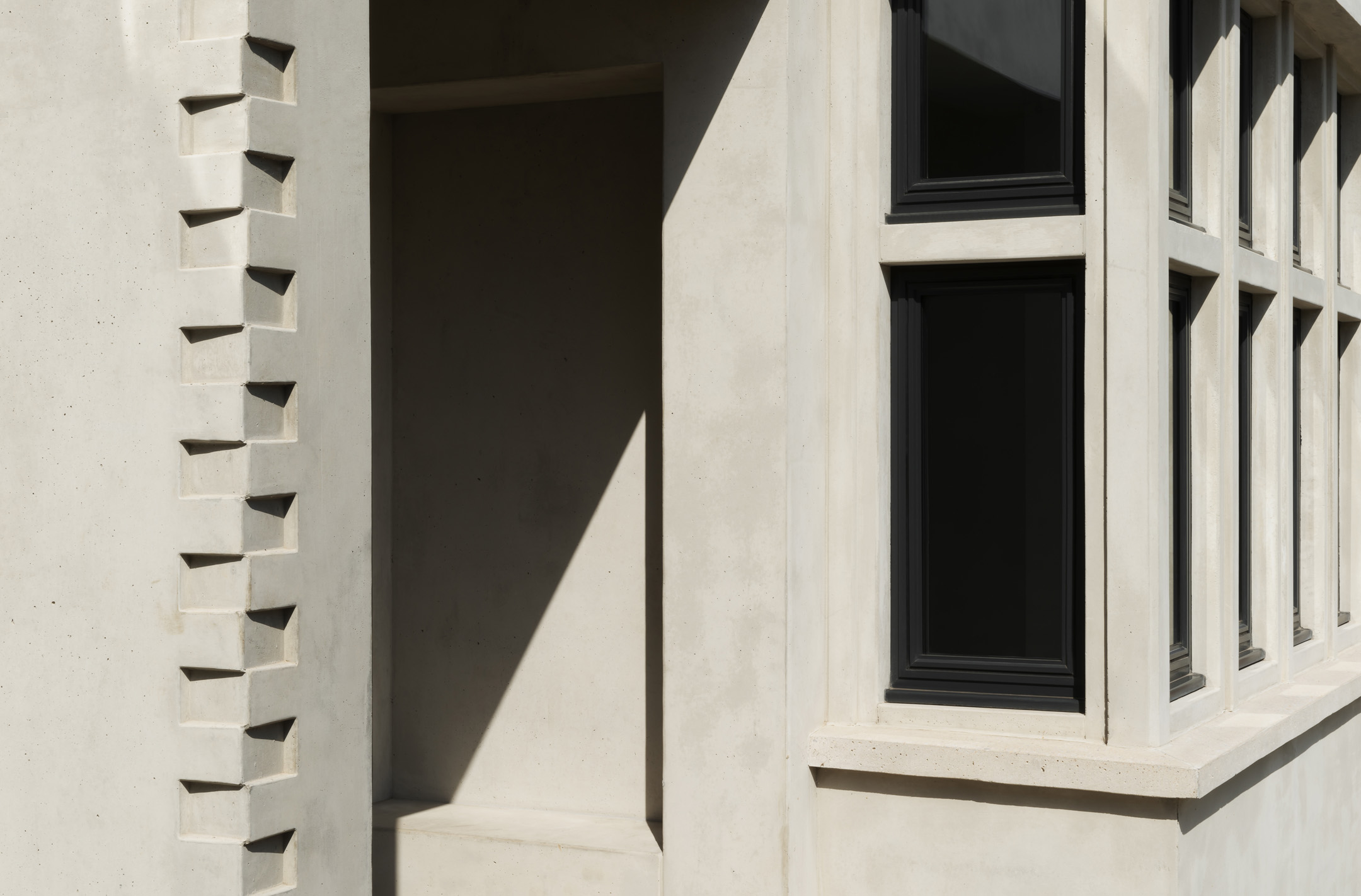
Cast House combines these motifs in a composition of London stock brick and precast concrete, marrying bay windows with a recessed entrance porch on its front elevation, playfully responding to the established rhythm of the street.
The rear façade is bolder in design, forming a cascading sequence of tiered cubic volumes which project out into the garden, with a concrete stair linking down to a sunken terrace flanked by cubic volumes accommodating planters and an open hearth for outdoor cooking.
Advertisement
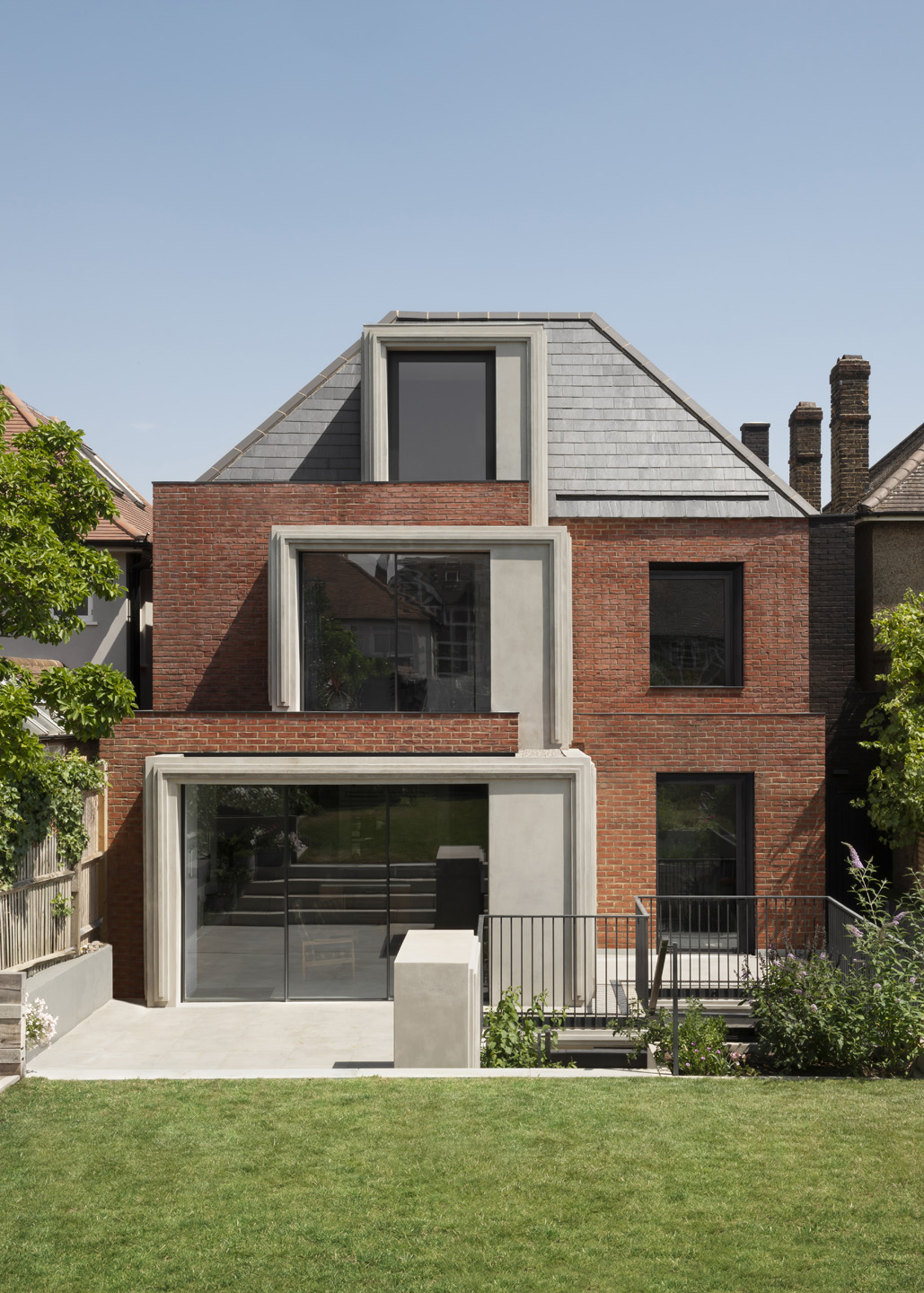
Inside, a bright blue suspended stair connects all levels, its base oriented to the stepped garden terrace.
The construction follows Passivhaus principles, and includes two air source heat pumps (ASHP) and a mechanical ventilation heat recovery system (MVHR).
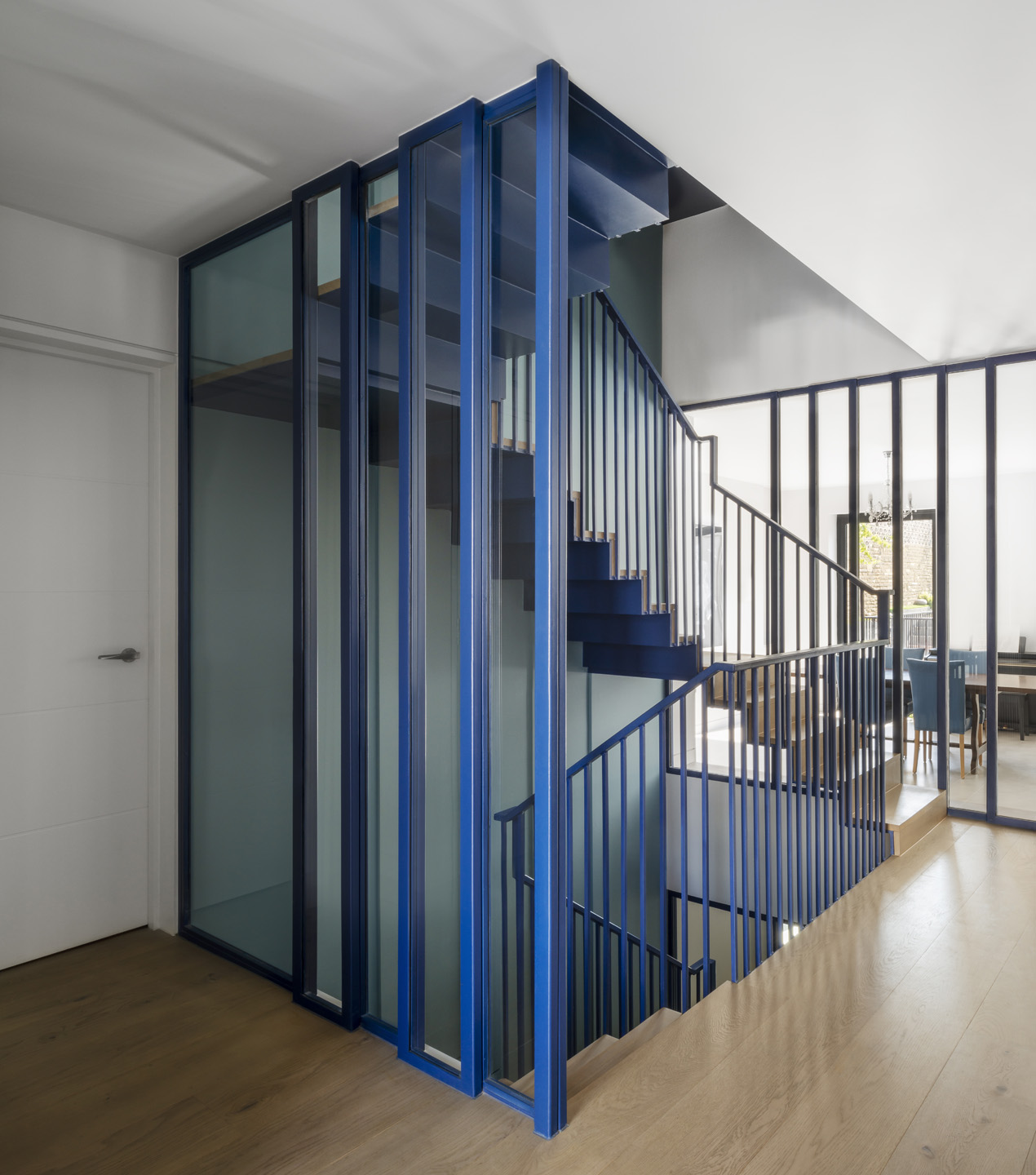
Architect’s view
The two elevations are unified by a clear design rationale and sparing palette of materials, with brick and concrete interlocking throughout.
The 420m2 four-storey house sits within the footprint and height parameters of the original house, while excavating one level below, and creating a fifth bedroom as an attic room with dormer window.
On the rear elevation, the floors project out as volumetric boxes, with each room opening onto a private terrace overlooking the stepped terraces of the garden, bringing generous light into the interior.
The design seeks to emulate the lasting quality and craftsmanship of the 1930s housing while reducing the embodied energy of the build. The precast panels contain a high content of ground granulated blast-furnace slag (GGBS), a cement substitute, which reduces the amount of embodied CO2, yielding a whitewashed look to the concrete. The softer, variegated texture of the concrete has been achieved through the use of additional moulds at the rear, with the imprints of the bricks, while revealing the aggregate on the window sills and planters.
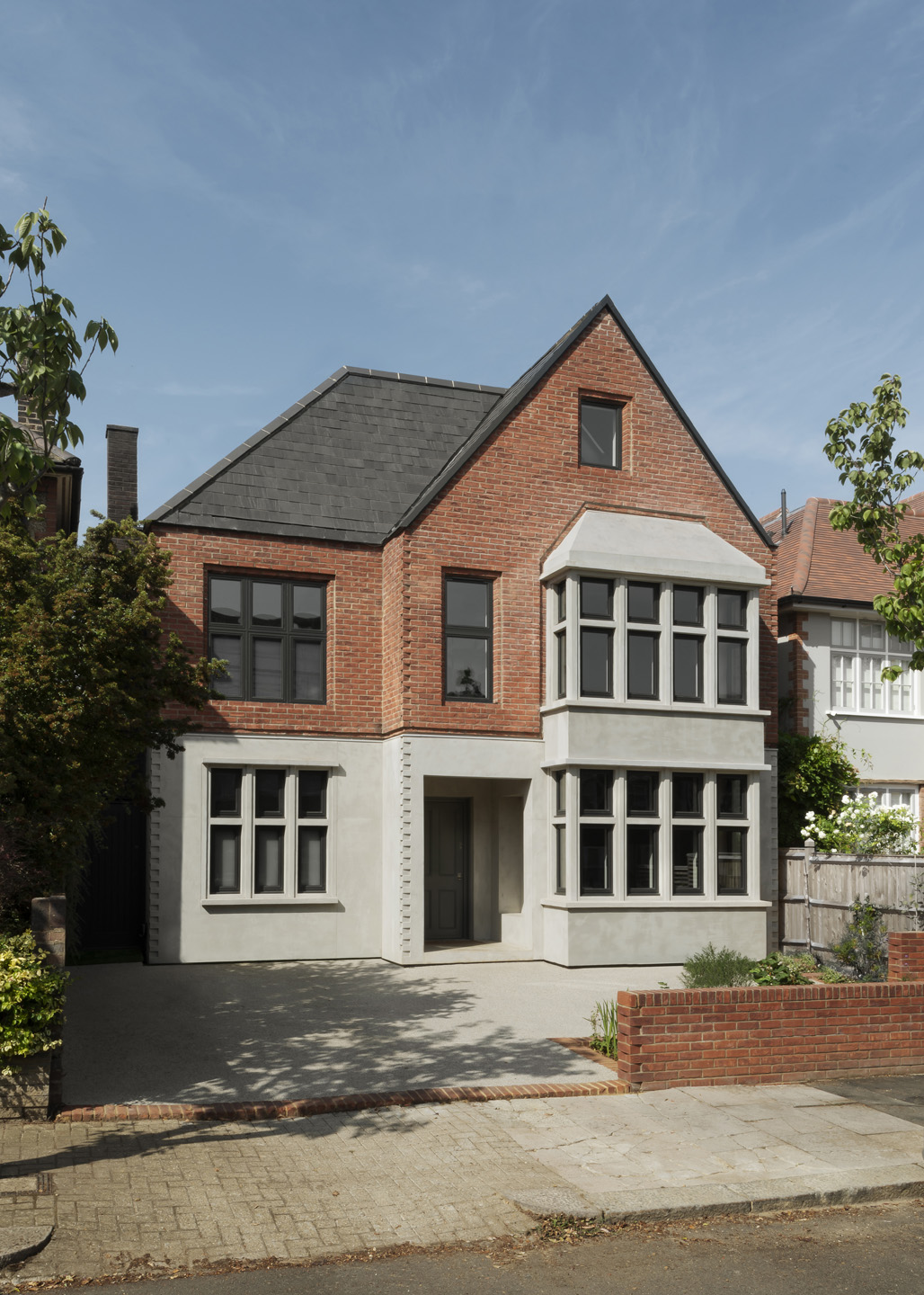
Emphasising the craftsmanship of the build, the concrete volumes are detailed with a framing lintel. In the street elevation the brick volumes are edged with interlocking brick corners, cut at an angle to create a rhythmic pattern along the vertical edges, a pattern which is inverted in the concrete plinth below.
The inset brick detail gives the impression that the concrete volumes have been pushed into an existing façade, creating a distinction between active and passive volumes, receding and projecting elements, and the contrast of brick and cast concrete, which emphasises the volumetric gesture.
Katerina Dionysopoulou and Billy Mavropoulos, directors, Bureau de Change
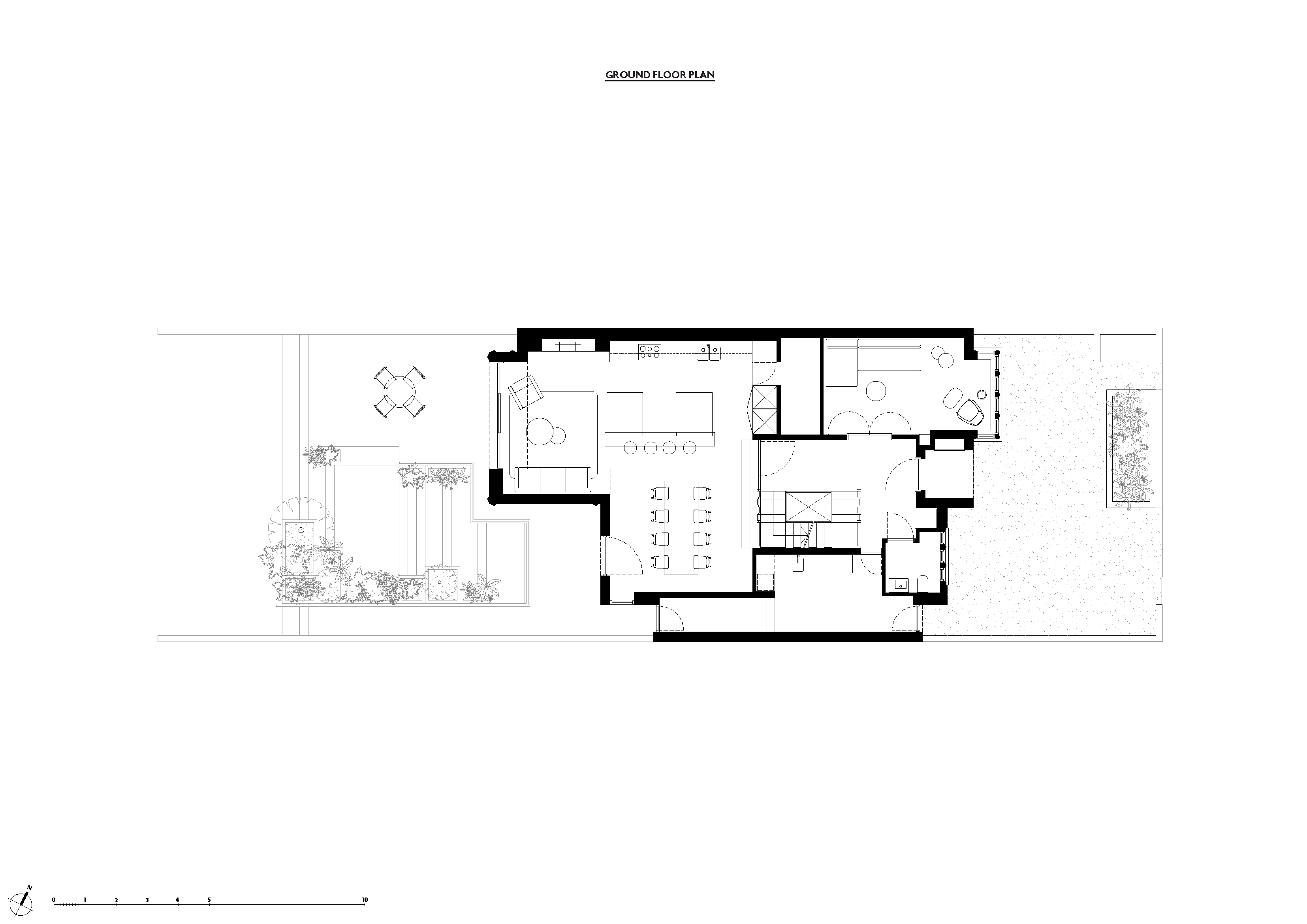
Source:Bureau de Change
Project data
Start on site September 2021
Completion December 2022
Gross internal floor area 420m2
Gross external floor area 458m2
Form of contract JCT Intermediate
Construction cost Undisclosed
Architect Bureau de Change
Client Private
Structural engineer Blue Engineering
M&E consultant MWL Consulting
Approved building inspector London Building Control
Main contractor PRS Builders
 The Architects’ Journal Architecture News & Buildings
The Architects’ Journal Architecture News & Buildings
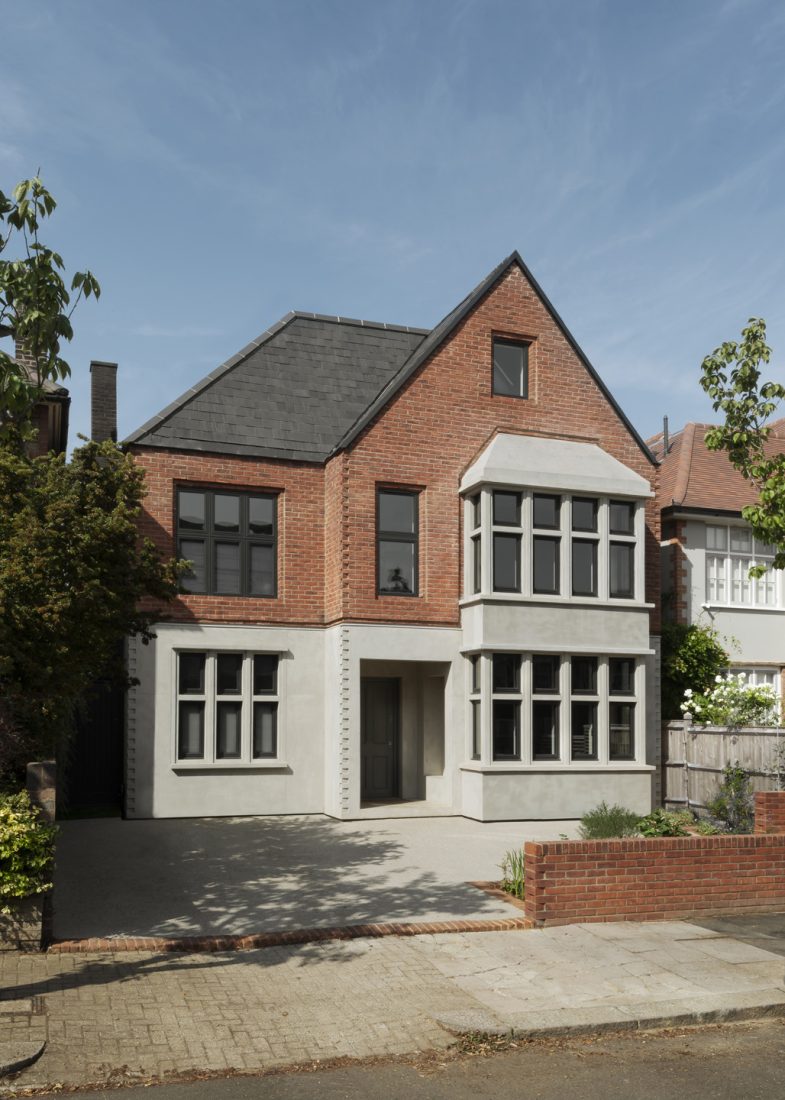






















Leave a comment
or a new account to join the discussion.